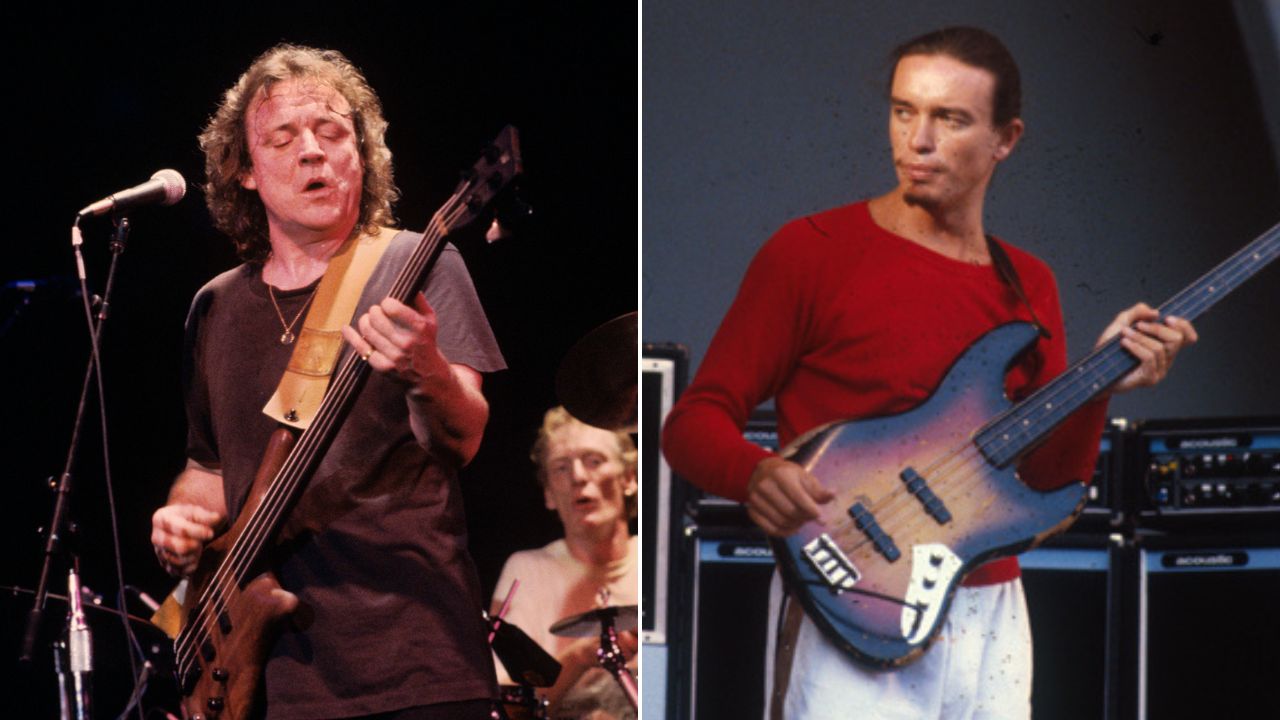20 milestone moments in Marshall’s 60-year quest for bigger, badder tone
Featuring Hendrix, Townshend, Nigel Tufnel and more, this history of Marshall by numbers goes to 11 and beyond
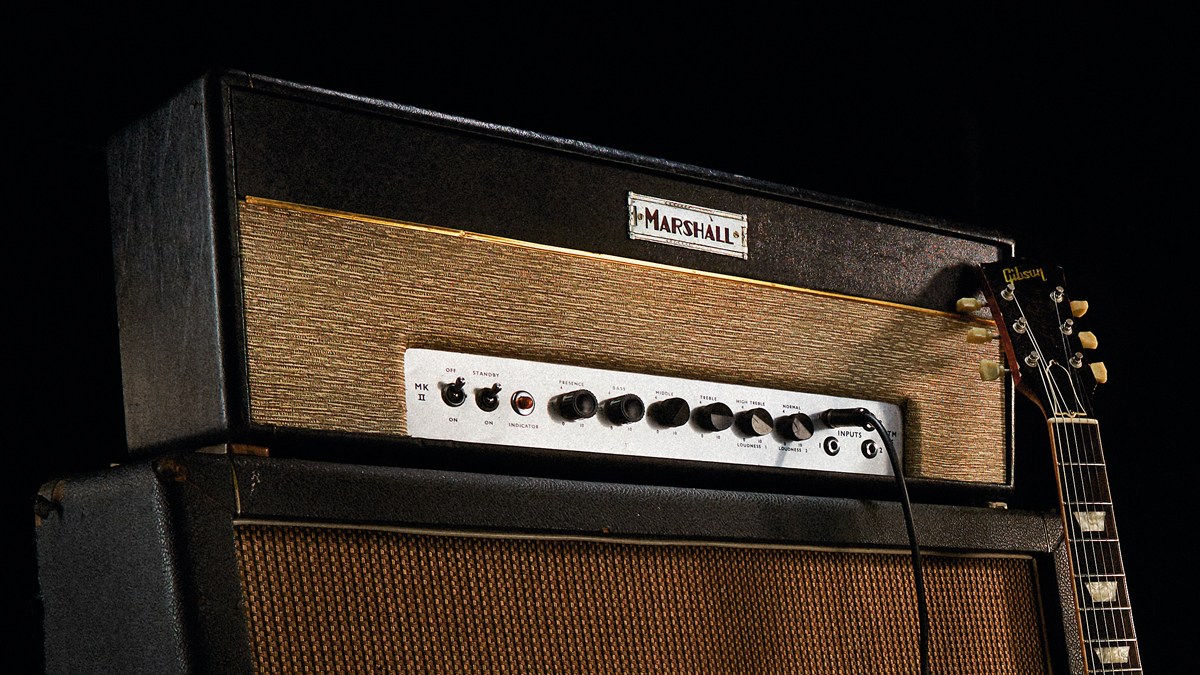
Over six decades Marshall has helped define electric guitar tone, providing backline for some of the most influential and high-profile guitar players on the planet.
The titans of rock, players such as Jimi Hendrix, Pete Townshend and Jimmy Page, needed volume and lots of it in the days before the PA could carry some of the load. Marshall provided it.
But as the needs of guitar players changed – more gain, lower output, higher outputs, digital modelling and the ‘80s penchant for rackmounted gizmos – so too did Marshall design.
It’s not easy to condense 60 years of Marshall history into a concise package, so here we are going to look at Marshall by the numbers, taking a whistle-stop tour through the evolution of the brand, from its super-sized stacks to the present day, when digital technology has allowed the British amp legend to augment its lineup with the bedroom-friendly CODE Series.
1: A do-it-all valve preamp for the 90s
The JMP-1 valve preamp, launched in 1992, was a child of the rackmount era. It featured four channels, two clean and two dirty, and was (natch) MIDI programmable.
A pair of 12AX7 valves provided the tonal authority, but the JMP-1 also featured OD1 and OD2 modes – which offered vintage and tight, modern drive voices respectively – plus a stereo effects loop, speaker emulation and a Bass Shift function that altered the low-end voicing.
It was a bestseller, and stadium giants Def Leppard and Billy Gibbons, who routed one or more JMP-1s into a Marshall 120/120 Valvestate power amp, were among the well-known players who racked up hits with the JMP-1, which could be combined with Marshall’s EL84-based 20/20 single-rack unit power amp (which provided 20+20 watts of stereo output) for an ultra-compact, all-valve rack rig.
All the latest guitar news, interviews, lessons, reviews, deals and more, direct to your inbox!
3: The number of Marshall stacks Hendrix first bought
Jimi Hendrix was only just finding his feet as the rising star of the London scene in 1966. Author Rich Maloof notes in his excellent reference book Jim Marshall: The Father Of Loud that Hendrix was chagrined to discover he couldn’t bring the Fender amp he ordinarily used because the space was already taken up by multiple Marshall head-and-cab rigs used by other guitarists on the bill.
So Mitch Mitchell duly brought Jimi down to Jim Marshall’s shop where he bought “three stacks”, according to Jim’s recollections, which were intended to be shipped to different continents so Jimi had one on hand at all times when touring.
Jim added that one of Jimi’s roadies was subsequently trained by Ken Bran and Dudley Craven to be able to repair Hendrix’s hard-pushed amps on tour – launching Hendrix’s long and iconic relationship with the brand.
4: Marshall’s 350-watt hybrid
Marshall’s Mode Four guitar amp, which was launched in 2003, was designed to meet the needs of contemporary metal players. A two-amps-in-one design, it utilised a 350-watt solid-state power stage to deliver tightly defined high-gain tone, though its two independent preamp channels featured an ECC83 triode valve.
The Mode Four’s party trick was that the power amp could run in two modes – named Amp 1 (Plexi style) or Amp 2 (optimised for down‑tuned guitars). Both Amps could be operated in two further sub-modes called Clean and Crunch on Amp 1 and two overdrive types on Amp 2, hence the Mode 4 name – as four distinct voices resulted.
While Marshall’s Mode Four hybrid wasn’t embraced by the purists, it was adopted by respectable numbers of pro players, such as Dave Navarro of Jane’s Addiction.
8: The number of speakers Pete Townshend wanted
As a customer since Marshall’s earliest days, The Who guitarist’s needs shaped mid-60s prototype amp designs. By 1966, Townshend had already taken delivery of a more powerful 50-watt version of the JTM45 head (realistically producing nearer 30 watts) called the Model 1987.
However, a request for a 100-watt head was not long in coming. Marshall duly made three prototypes, after which Townshend requested a behemoth 8x12 cab. Jim Marshall warned him it would be punishingly heavy for The Who’s roadies to lift, to which Townshend allegedly replied, “Sod ’em, they get paid!”
But since a 1960A 4x12 cab weighs around 38kg (84lb), the massive 8x12 probably weighed over 70kg (154lb), Marshall designed the now-iconic two-piece stack with a straight-fronted 4x12 cab on the bottom and an angled 4x12 on top. The latter was designed to slope back towards the head to make the overall look less blocky – though Jim claimed it also projected sound towards the back of auditoriums better.
11: Nigel Tufnel’s maximum volume setting
The infamous ‘one louder’ that the volume controls of Nigel Tufnel of Spinal Tap’s Marshall head could be set to, as compared with the maximum of 10 that ordinary Marshalls of the era went up to.
Spoof documentary maker Marty DiBergi’s bafflement at this (“Why don’t you just make 10 be the top number and make that a little louder?”) is now legendary and, to their credit, Marshall soon made the joke official.
When the JCM900 was launched in 1990, six years after This Is Spinal Tap, it featured a Sensitivity or Lead Gain dial (depending on variant) that went up to 20 or “nine louder” as Tufnel helpfully pointed out in promotional ads of the time.
When Guitarist visited the Marshall studio to photograph rare amps for this issue, we were shown the last word on this loudness arms race – a custom head built for Tufnel on which a channel volume dial went up to… infinity.
18: The wattage of Marshall’s small-but-juicy 60s combos
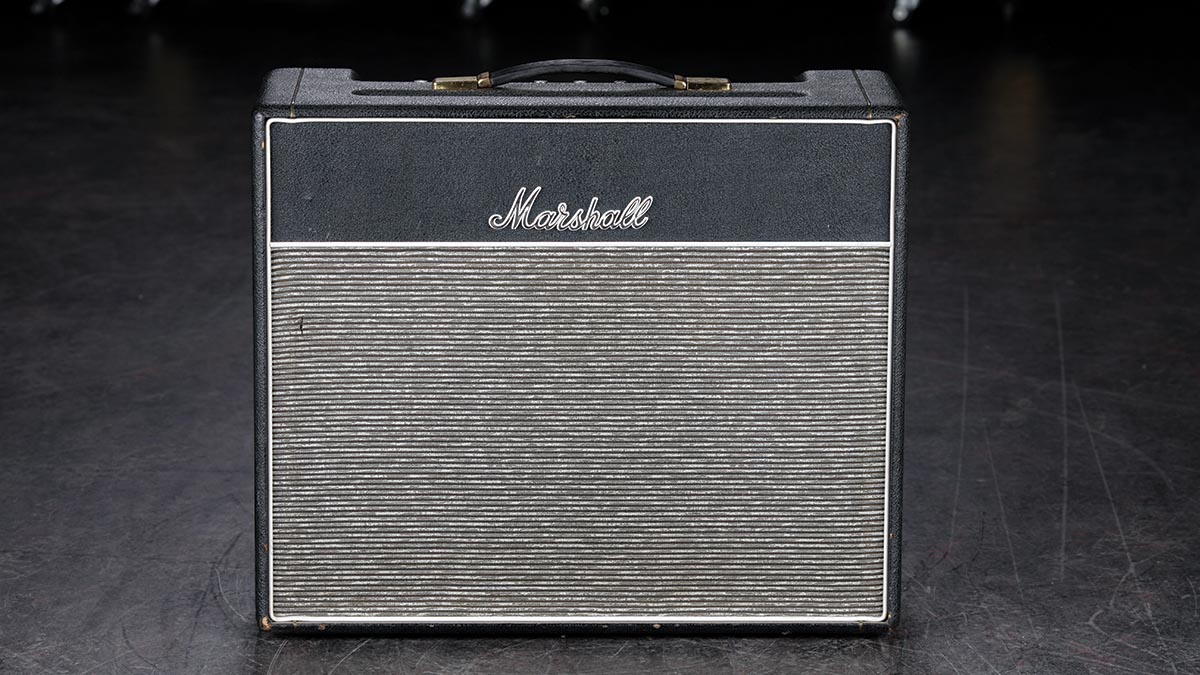
While towering stacks are the iconic image of Marshall amplification, some of their most toneful amps of the 60s were much smaller.
It’s easy to forget that Marshall was in pretty heated competition with Vox in the mid-60s with Jim Marshall declaring he was “going into battle” with Vox’s Tom Jennings after the latter made ill-tempered phone calls to Jim warning him to stay off Vox’s commercial turf.
Vox’s star products were its AC15 and AC30 combos, so in 1965 Marshall duly launched three 18-watt combos: the Model 1974 (1x12), the Model 1973 (2x12) and the Model 1958 (2x10).
Powered by EL84 output valves operated at a low plate voltage and featuring three ECC83 (12AX7) preamp valves, it was easy to unlock the full rich, compressed voice of these amps at studio volume levels – which made them highly sought after in subsequent years, with Gary Moore featuring one of the cover of his Still Got The Blues album in 1990.
An optional reverb also, incidentally, made them the first Marshalls to feature the effect.
30: The anniversary that launched triple-channel amps
By 1992 Marshall amps had been in business for three decades and the company decided to mark the occasion by introducing a feature-laden series of 30th Anniversary amps that promised to deliver a motherlode of historic Marshall tones from past and present.
The result was a highly configurable triple-channel amp with seven preamp valves that was a tone-tweaker’s delight. For example, Channel 2 had a Mode A/B/C selector that allowed the player to switch between the voices of Super Lead Plexis, 70s Master Volume heads and high-gain JCM900 amps – or as near to each as a single amp could get, at least. Other progressive features included a damping switch that tuned the amp to deliver crisp, detailed cleans or loose but aggressive midrange.
The amps that were made in the first year of production were clad in commemorative blue Tolex, while a further 1,300 limited-edition ‘LE’ models featured brass plating on their metal chassis components plus a solid brass Marshall logo.
76: The street number of Jim’s first shop
Jim Marshall & Son opened up for business in 1960 at 76 Uxbridge Road in Hanwell, and though it was primarily a drum shop at first, its early customers included Ritchie Blackmore and Pete Townshend.
By 1961, the guitar side of the business was growing – American guitars including Fender and Rickenbacker were stocked – and Jim noticed Fender’s Bassman amp was admired by young British guitarists, inspiring the creation of Number One (see page 56 for more) in 1962.
When the new JTM45 amps proved a hit, Marshall expanded into a larger shop down the road at 93 Uxbridge Road in March 1963. However, even this site wasn’t big enough to house both an amp-making workshop and a music retail store. So in June 1964, Marshall amp production moved into its first dedicated factory in Hayes, Middlesex, where 15 people were employed to make around 20 amps per week.
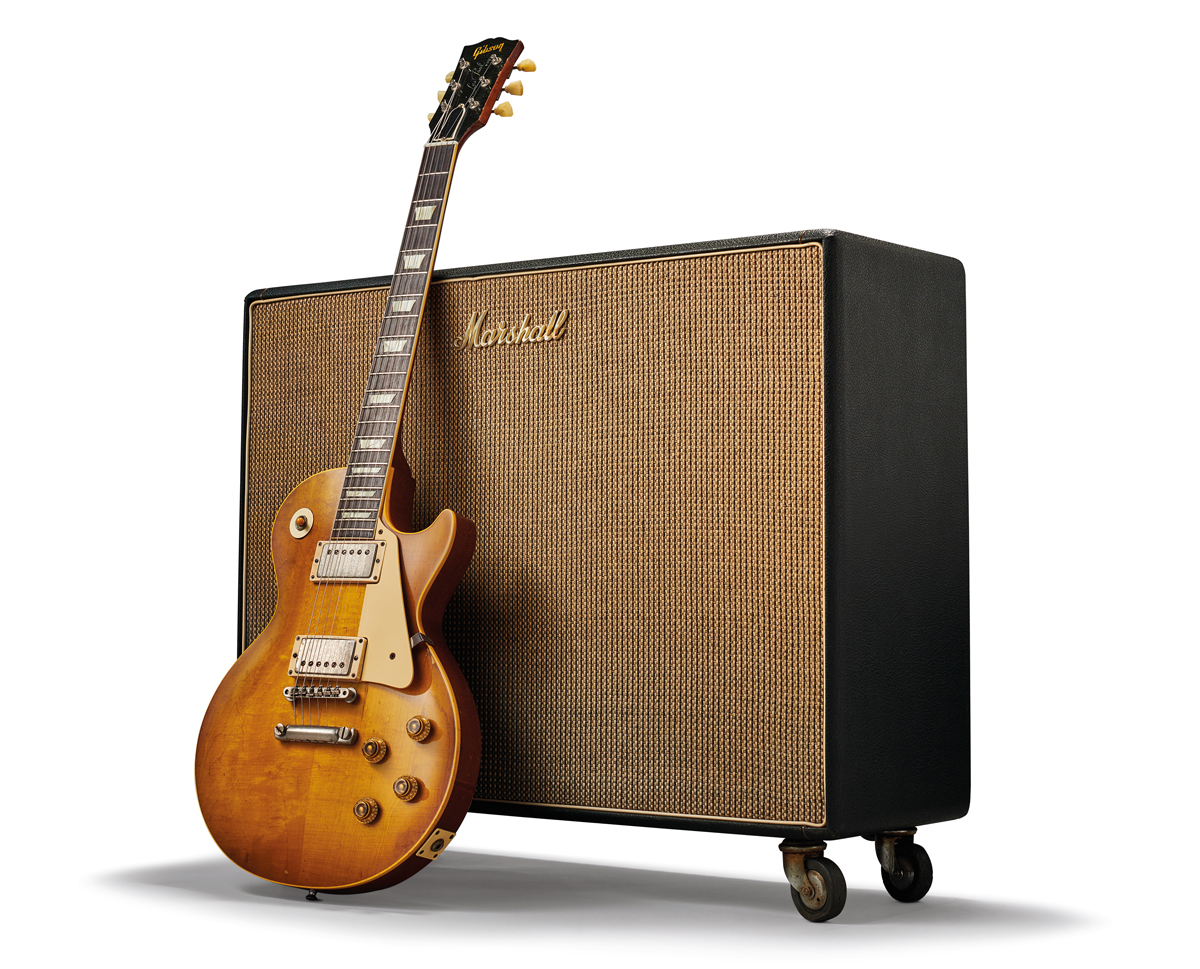
175: The number of cabs on stage for Marshall’s 35th
The phrase ‘a wall of Marshalls’ has entered into rock ’n’ roll cliché, but the term was probably aptly used, for once, to describe the 175-strong line of cabinets assembled for Marshall’s 35th Anniversary event at the Hammersmith Odeon in 1997.
As author Rich Maloof notes in Jim Marshall: The Father Of Loud, a few artists came fairly close to this achievement on stage at the height of their pomp, with KISS using up to 44 Marshall cabs in their stage rig and Slayer touring with a mere 24. Van Halen also gets an honourable mention for posing for a photoshoot in front of 80 Marshall cabs.
200: The wattage of the loudest Plexis of all
In the late 60s, before PA systems were widespread, volume was king. Top guitarists wanted frightening amounts of output from their amps and even a 100-watt Super Lead was felt to be insufficiently loud by some – leading to the development of the 200-watt Marshall 200, which was launched in 1967, powered by potent KT88 output valves.
In late 1968 the model’s tone controls were revised and the head was renamed the Marshall Major. Fans of these 200-watt Marshalls included Deep Purple guitarist Ritchie Blackmore, who had been a customer at Marshall’s shop since 1961.
In 1970, the year Deep Purple In Rock was released, Blackmore made the switch from using Vox AC30s to Marshall 200-watt heads that he claimed were boosted, following modifications by his techs, to 300-400 watts.
900: A factory-modded Marshall for the 90s
The JCM900 series of amps, which launched in 1990, aimed to beat Marshall modders at their own game by offering amps that came fitted with hot-rod performance straight off the production line.
The JCM900 models were fitted with three ECC83 (12AX7) preamp valves for extra gain, though later SL-X (Super Lead eXtended) variants had a fourth ECC83, yielding yet more dirt. JCM900 amps were all made in one of two types: single-channel Master Volume MK III, tracing its ancestry to the 2203 and 2204 models of 1975, or the twin-channel Hi Gain Dual Reverb type.
All models, however, featured a series effects loop, two line outputs and a High/Low switch that halved the amp’s output for bedroom use.
1965: The year Park amps spun off from Marshall
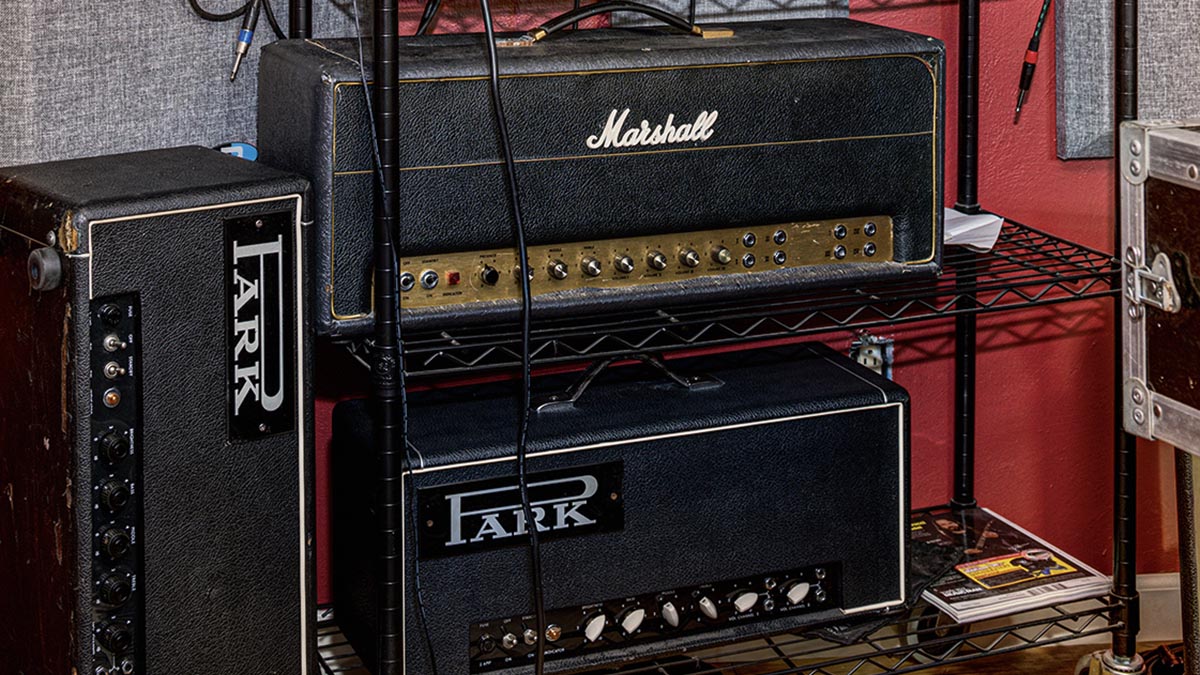
In 1965, Jim Marshall signed a 15-year contract with the Rose Morris Agency, an international instrument distributor. Although it opened up new markets, the contract meant Rose Morris got 55 per cent of the proceeds of Marshall amps sold in the US, as well as a healthy slice of the profits of amps sold in the UK.
In order to keep Marshall amps competitively priced in stores, Jim was forced to reduce the margin Marshall itself received and later said that signing the Rose Morris deal was one of his few regrets.
Keen to claw back this loss of profit elsewhere, Jim started a wholesale business called Cleartone Musical Instruments (CMI). The Rose Morris deal prevented Marshall amps being sold via distributors Jim had previously worked with, including John Jones.
However, Jim decided he could continue selling amps to Jones via CMI, provided he didn’t badge them as Marshalls. Thus the ‘Park’ line of amplifiers was born, the moniker deriving from John Jones’s wife’s maiden name.
1966: The year the Plexi was born
Few terms in the world of amplifiers are as evocative as ‘Plexi’. But the moniker is simply short for Plexiglas, which was a trade name for what is widely known today as Perspex.
This material, with screen-printed characters on the front and gold backing, was used to make control plates for Marshall amps from 1966 to 1969, though surplus stocks of Plexiglas plates continued to be used up to 1973.
After that point, control plates were fabricated from aluminium instead, being easier to produce.
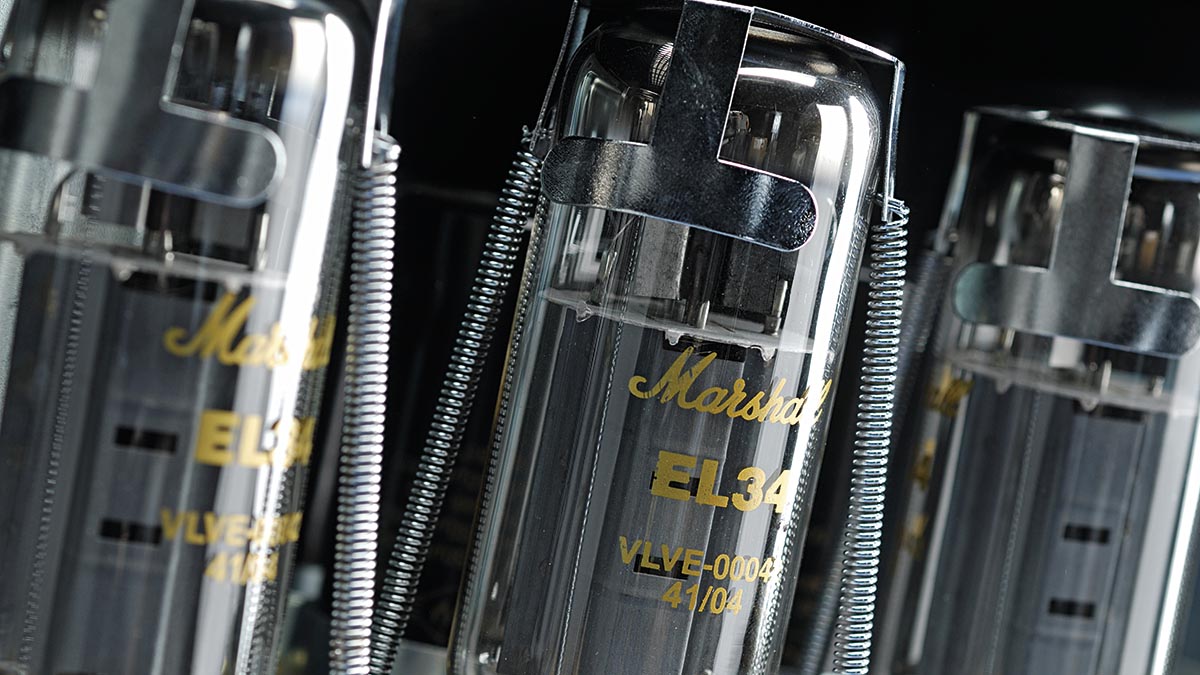
Classic Plexi Marshalls include the Model 1987 head, which was essentially a JTM45 that had the GZ34 valve rectifier swapped out for a solid-state equivalent, and this used EL34s as standard in the power stage plus a new mains transformer, upping the power to 50 watts.
The most famous Plexi of all is, of course, the 100-watt Model 1959 Super Lead, but the toneful little Model 1974 18-watt Plexi combo, introduced in 1966, is also highly sought after.
1969: The year Jimmy Page started using Marshall
To be fair, Page was quoted in Marshall promotional brochures in 1992 as saying 1970 was the year he began using Marshall amps on stage, but it’s known that he used Marshalls at the Festival Of The Blues at Bath Recreation Ground in June 1969 and on Led Zeppelin II (released in October ’69).
Page typically used 100-watt Plexi heads on stage but boosted their power further through the use of KT88 power valves instead of EL34s, and Page claimed he succeeded in getting closer to 200 watts of output through modification.
Like Blackmore, Page had considered, at the start of Led Zep, using multiple AC30s but ended up with 100-watt Marshalls (interestingly set with the volume “at about three” as Page told Guitar Player magazine in 1978) to compete with the deafening live sound of John Bonham’s kit.
1981: The year Marshall’s JCM800 broke free
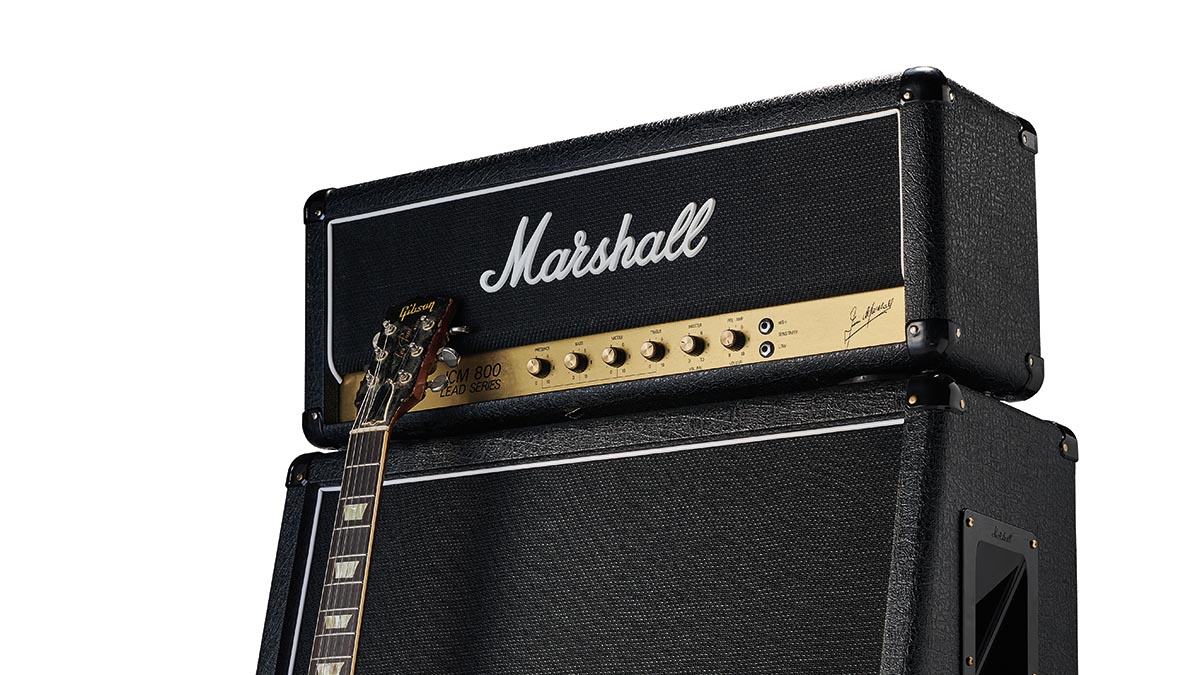
In 1981 Marshall’s ill-fated contract with distributor Rose Morris came to an end. This enabled Jim Marshall to slash export prices of Marshall amps by 25 per cent, opening up the American market – a liberating moment that inspired Marshall to launch the classic JCM800.
The JCM800 had its roots in Marshall’s first Master Volume amps, the model 2203 (100-watt) and 2204 (50-watt) designed by Steve Grindrod in 1975. These were based on earlier Plexis but featured cascading gain stages and a preamp gain control that enabled players to get overdriven tones at a lower overall volume.
The JCM800 was essentially a 2203 with cosmetic updates including a much-enlarged Marshall logo and white piping around the baffle, which was covered with cabinet grille cloth, not vinyl. JCM stood for James Charles Marshall.
1991: The year Valvestate made hybrid amps a hit
Considering that glowing valves are such an important part of Marshall DNA, the success of the affordable Valvestate line, which featured but a single ECC83 (12AX7) in the preamp, might have come as a surprise. But the blend of decent tone, affordability and gig-ability made these mainly solid-state amps a big-seller.
Marshall designed a special “bipolar, high-impedance” circuit to emulate the sound and feel of an all-valve amp and it worked well enough to garner the Valvestates a big following.
They hit the market during a shortage of EL34 valves when the Czech Tesla factory that supplied Marshall folded, after which the company’s all-valve heads had to switch to Sovtek 5881s for a time. Marshall’s tube-frugal Valvestate series was not vulnerable to such problems and was expanded into a sprawling range that included everything from stereo-chorus combos to a 10-watt micro stack.
2000: The number of the beastly Dual Super Lead
Despite its seemingly millennial title, the JCM2000 was in fact launched three years earlier, in 1997. As the Dual Super Lead moniker suggests, its design brief was to bring the chunkiness and warmth of the old Plexi Super Lead’s power stage together with the high-gain performance of the JCM900.
The first model to launch was the DSL100 head, which featured two channels – Classic Gain and Ultra Gain. These each had two selectable sub-modes: Clean and Crunch for the Classic Gain channel, while the Ultra Gain channel offered Lead 1 and 2 modes, offering hot and hotter degrees of modded-Marshall scream. There was also a useful Deep button that boosted bottom-end but kept it tightly defined.
One of Marshall’s better-regarded post-90s lines, the JCM2000 series evolved into a Triple Super Lead variant the year after launch, boasting three channels like the 35th Anniversary amps before it, plus some sophisticated effects loop options, XLR emulated outputs, a Virtual Power Reduction attenuator and more.
2016: The year Marshall went big with modelling amps
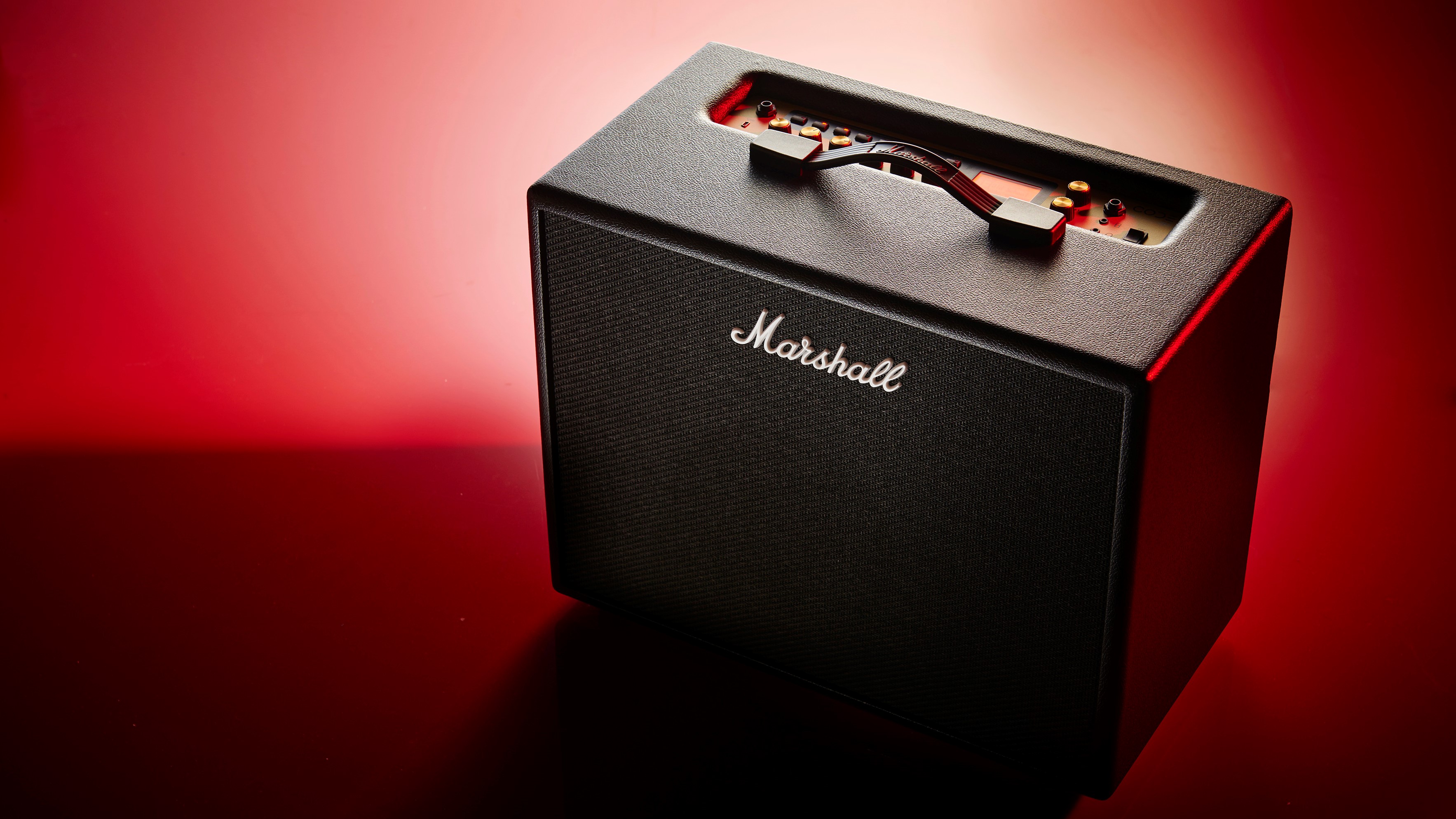
Marshall’s Code Series saw the company come full circle, launching an amp that featured digital emulations of its most famous valve amps from six decades of the company’s history, including the JTM45 2245, 1962 Bluesbreaker, 1959SLP Plexi, JCM800 2203, JCM2555 Silver Jubilee, JCM2000 DSL100 and JVM410H.
The Code Series was the fruit of a partnership with Swedish digital modelling specialists Softube. The two companies had first worked together a few years previously on Marshall’s JDM amps, which married a modelling-based preamp with a valve-powered power stage.
Marshall took things a step further with the Code Series, offering an all-digital series of amps, initially three combos and one 100-watt head, featuring 14 different preamps, four power amps and eight speaker cabinet combinations that could be controlled from a Gateway app on mobile devices.
2555: The moniker Of Marshall’s 100-watt Silver Jubilee
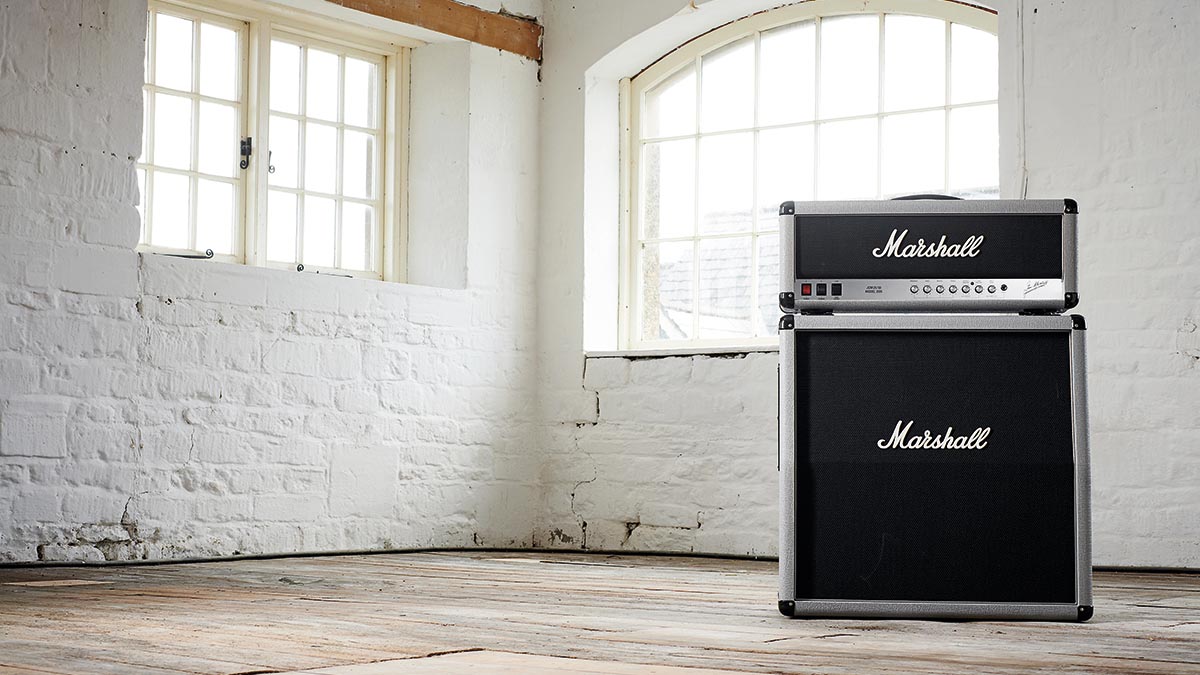
Clad in now-iconic grey livery, the Model 2550 (50-watt) and Model 2555 (100-watt) Silver Jubilee amps, launched in 1987, were created to mark two important anniversaries: Jim Marshall’s 50th year in the music business and 25 years of Marshall amps.
Like so many of Marshall’s post-60s designs, the Silver Jubilees were evolutions of the 2203 and 2204 Master Volume heads of the mid-70s. But they had some interesting quirks that make them sonically distinctive and sought-after even today.
A novel and mildly confusing preamp channel featured three gain modes: Clean, Rhythm Clip (a boost activated by a pull-switch on the Input Gain Control) and hotter-gained Lead Channel (activated by footswitch or a pull-switch on the on the Output Master Control knob).
Both the 50-watter and the 100-watt variants could be run at full or half power, too, using a Pentode/Triode switch, which governed the performance of the power valves – with Triode being the half-power setting – altering the feel and tone as well as output.
100 million: The amount in pounds sterling that Jim was once offered to sell the business
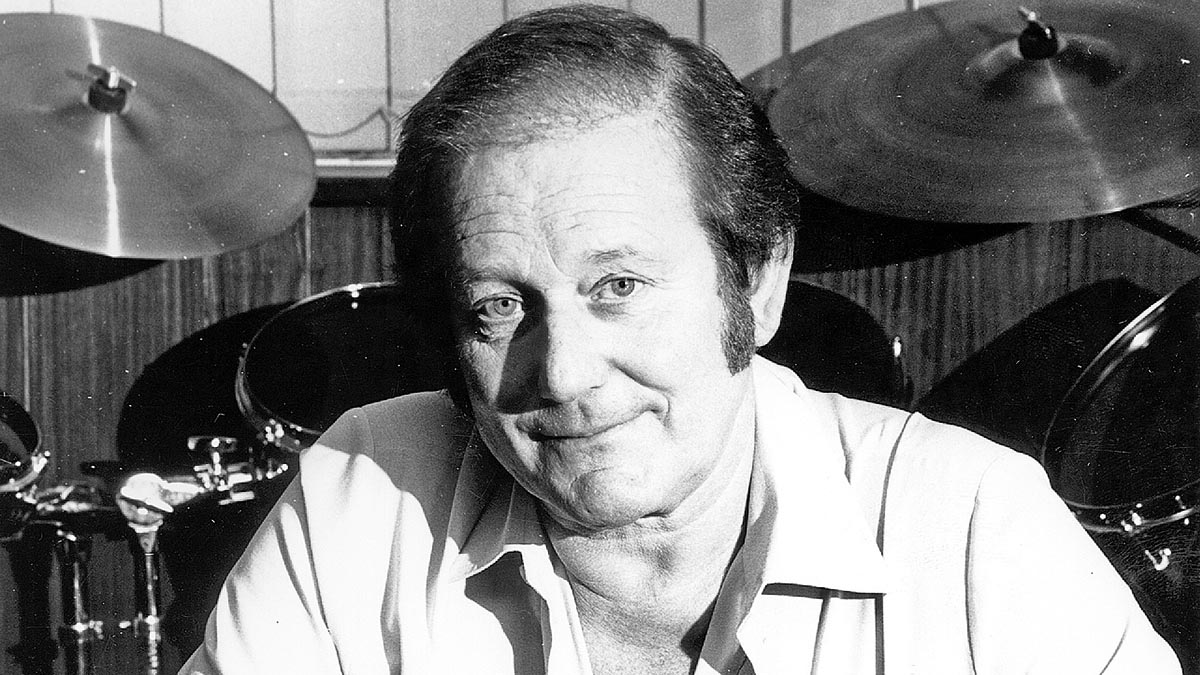
Author Rich Maloof recounts in his definitive reference Jim Marshall: The Father Of Loud that Jim Marshall had an enormous carrot dangled in front of him in 1989 to try to persuade him to sell the business.
It was woodwind and brass instrument maker Harmon, improbably enough, that made the approach, offering Jim a reported £100 million for the iconic company plus £1 million a year for 15 years to stay on at the company as an adviser.
Jim’s refusal of the offer was characteristic: “It’s my name,” Marshall told them. “And I wouldn’t want to be told what to do by somebody else.”
